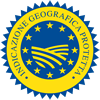Description
The Sale Marino di Trapani PGI refers to salt obtained through the fractional precipitation of the compounds and elements contained in seawater by evaporation, within the salt works in the Province of Trapani.
Production Area
The production area of Sale Marino di Trapani PGI is within the territory of the municipalities of Trapani, Paceco and Marsala, in the Province of Trapani, in the Sicily region.
Production Method
The salt works are made up of a system of communicating reservoirs fed by the extremely clean sea water of the Isole Egadi Reserve, which is directly facing the coastal area where Sale Marino di Trapani PGI is produced. There are four large communicating reservoirs, where the seawater is slowly evaporated and transformed. The reservoirs in the first area, which is the area that is in direct contact with the sea, are called fridde; the reservoirs in the two intermediate areas are known as “cultivation” and “alteration” and the last, where the transformation of the salt is completed, is called “salting” or “crystallising”. Processing is monitored by the salt work’s technicians who meticulously control the various processing stages. Harvesting takes place by hand (up to three times during the same period of production) or through the use of machines (only once a year or in multi-annual cycles). Hand harvested salt is conserved during the winter period by being covered with terracotta tiles, allowing the excess moisture to be gradually released. This is followed by “decrusting”; about 1-2 cm of the top layer of crust on each salt stack is removed before being transported to the conditioning and packaging plants. In the case of machine harvesting, special salt harvesters enter the reservoirs and remove the salt crust that has formed throughout the season. The processing techniques involve: counter-current washing in saturated salt water, centrifugation, mechanical grinding in local stone mills or roller mills (stainless steel), desiccation in ovens at a temperature of up 250°C and mechanical screening.
Appearance and Flavour
Sale Marino di Trapani PGI is white in colour, with compact crystals and granules of various sizes.
History
The first salt works in Trapani date back to the time of the Phoenicians. In fact, the Phoenician population held the monopoly on this product, at the time defined as “white gold”, throughout the whole of the 1st millennium BC. Firm evidence of the presence of salt works in the Province of Trapani can be found during several of the following centuries, in particular in a citation from the Libro per lo svago di chi ama percorrere le regioni, written by the Arab geographer Abd Allah Muhammad, in 1154. Starting from 1440, the salt works were given as duty and this led to them spreading along the coastal area of Trapani, eventually leading to the construction of the Trapani Port, from where ships loaded with this precious element parted for Europe. Today, the history of this ethno-anthropological cultural heritage can be found in the Sale di Paceco Museum.
Gastronomy
Sale Marino di Trapani PGI has various uses in cooking. It can be used in the preparation of fish (bream, snapper, sea bass) and game meats (partridge, pheasant, rabbit), with the ingredients being cooked inside a crust of salt.
Marketing
The product is marketed as Sale Marino di Trapani PGI. It is sold in specific packaging for food use, with a weight varying from 100 g to 1000 kg.
Distinctive Features
Sale Marino di Trapani PGI is an entirely natural product: it is obtained without the use of additives, bleaches, preservatives or anti-caking agents, and is therefore a particularly pure salt that is highly sought after by the Italian and European canning industry. As it is very rich in magnesium, this product is also extremely soluble.









